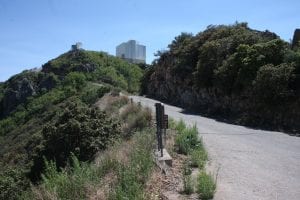I utilize observations across the electromagnetic spectrum to study explosive transients and their host galaxy environments. These transients include gamma-ray bursts, fast radio bursts, electromagnetic counterparts to gravitational wave sources, and anything that collides or explodes. I am a co-leader of the Fast and Fortunate FRB Follow-up (F4) collaboration toward observations of FRB sources, and the co-founder and co-PI of the Searches After Gravitational-waves Using ARizona Observatories (SAGUARO) collaboration in pursuit of gravitational wave sources. I am also a member of the ASKAP/CRAFT collaboration which discovers several new FRBs per year.
The main questions my group seeks to answer in our research are:
- What are the energy sources powering these transients?
- What is the nature and composition of material ejected from these sources?
- What types of environments do they explode into?
- What do their host galaxies look like, and what can they tell us about their progenitors?
To aid these efforts, I use a large variety of telescopes spanning radio, optical, near-infrared, and X-ray wavelengths on the ground and in space. My team and I also travel to large, ground-based telescopes such as the 6.5-meter MMT in Arizona and the twin 10-meter Keck telescopes in Hawaii. I also use information from the a number of Advanced Laser Interferometry Gravitational-wave Observatory (LIGO) and Virgo Observatories to rapidly follow gravitational wave sources and their host galaxies with many of these facilities.
 Examples of ongoing projects in my group:
Examples of ongoing projects in my group:
Explosion Physics of short gamma-ray bursts (GRB)
Anytime a gamma-ray burst is detected, we rapidly slew telescopes to take images and spectroscopy of the fast-fading afterglows as quickly as possible (<hours!). The spectral and temporal behavior give crucial clues into the explosion physics of GRBs. For these efforts, we currently have programs with Gemini, Keck, the MMT, Chandra, the VLA and ALMA.
Understanding short GRB progenitors from their host galaxies
Much progress in our understanding of the progenitors of short GRBs has come from studies of their host galaxy environments. To this end, we use optical and near-infrared spectroscopy to characterize the local and galactic environments of these events, model their stellar populations, and decipher their star formation histories. For these efforts, we collect data from large ground-based telescopes and fit to a library of models using the Quest High-Performance Computing Cluster at Northwestern.
Unveiling the progenitors of fast radio bursts (FRBs) from their host galaxies and multi-wavelength emission
With the F4 and CRAFT collaborations, we perform multi-wavelength studies of FRB host galaxies, determine their redshifts, and model their stellar population properties. We also perform rapid searches for counterparts to FRBs at multiple wavelengths.
Electromagnetic counterparts to gravitational wave sources
With the SAGUARO collaboration, we chase the light following gravitational wave events produced by the mergers of two black holes, two neutron stars, or a neutron star and a black hole. For counterpart discovery, we are building a concerted set of programs with a telescope network outside of Tucson, Arizona in collaboration with astronomers at the University of Arizona. We also have programs to characterize the light with the Keck telescopes, HST, Chandra, and the VLA.
GRBs as probes of obscured star formation
Long GRBs originate from the collapse of massive stars. One particularly interesting subset is “dark” GRBs, which can act as signposts of obscured star formation. Using a combination of radio and near-infrared observations, we aim to uncover these subsets to probe these otherwise under-studied pockets of the universe.
